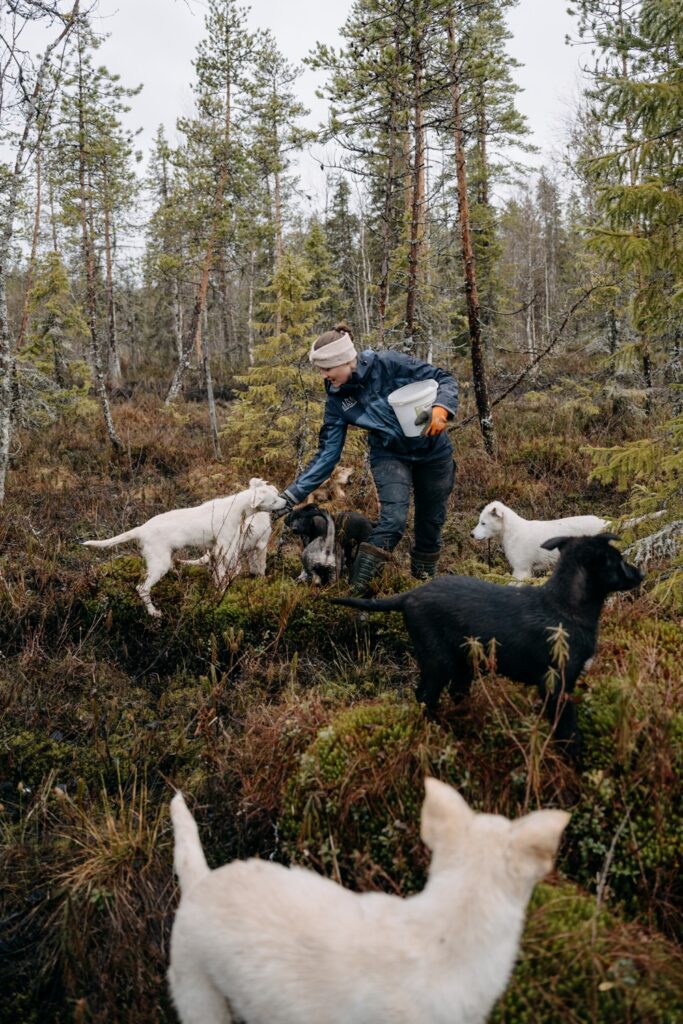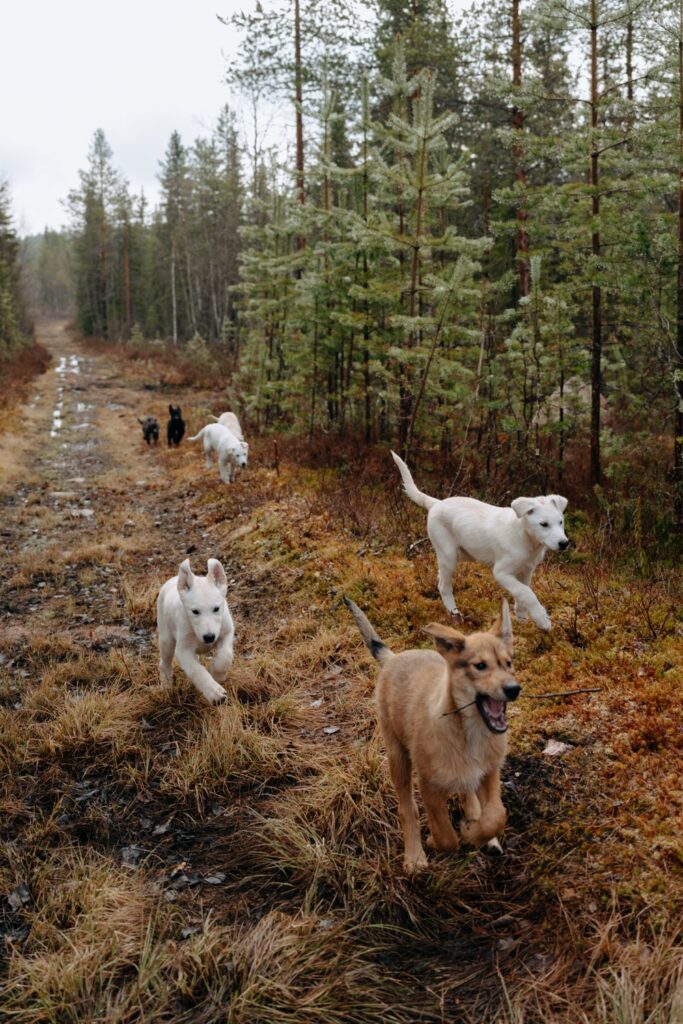Why We Walk the Puppies: Building the Foundation for a Sled Dog’s Life
At Bearhill, raising future sled dogs isn’t just about feeding, grooming, and housing them. It’s about preparing them for a life of adventure, teamwork, and focus. One of the most essential building blocks in that journey is our puppy walks — a daily ritual packed with intention, training, and long-term vision.
More Than Just a Walk
What might look like a casual stroll through the forest is actually the cornerstone of our training philosophy. These early walks are where puppies learn to trust humans, pay attention, follow, and ultimately grow into dogs that are confident in new environments, responsive to cues, and mentally resilient.
We’ve recently introduced a new twist to this routine: instead of weighing the puppies outside and then walking them, we now load them into the quad, weigh them on the indoor scale, and then head directly out for the walk. This small change is a meaningful innovation — not only does it keep the pups safe from potential dangers near the kennel (like passing traffic or older dogs), but it also prepares them early on for the future. These dogs will eventually travel by car, quad, or snowmobile — getting them used to being loaded, transported, and unloaded calmly and confidently is crucial.
Learning to Focus on Humans, Not Their Mothers
We recently reached an important developmental milestone: our puppies went on their first walk *without their mothers*. Until now, mom was the pups’ comfort zone — their security, their leader. But as they grow, it’s time for them to learn to focus on *us*. Removing their mother from the equation gently nudges their attention toward the human handlers. This shift is one of the most important in their early training.
Without older dogs leading the way, we become their reference point. We reward every glance, every step toward us, every bit of attention — not with force or pressure, but with quiet presence and well-timed treats.

The Power of Repetition and Calm
Every walk is a training session. Every moment is a chance to build a behavior. We reward calmness, attention, and connection. Something as simple as waiting quietly before being let out of the box becomes a valuable life skill. Instead of rushing the process, we start with the “easy” puppies — the ones who are already calm — and use their example to guide the more excitable ones.
Once on the trail, we don’t yell commands or wave treats constantly. The real goal is to teach them to *check in* — to look for us without us saying a word. When we stop, we wait. When they realize we’ve stopped and come back to us on their own — that’s the behavior we reward. This is how we build dogs who *want* to stay connected.
Developing Thinking Dogs
We don’t just want dogs that come when called. We want thinking, brave, adaptable dogs. That’s why we change the walking routes often. Because of the quad, we can now start our walks in different environments — the forest, the swamp, the lake, the hilltops — giving the pups a new challenge every time. Whether they’re crossing a shallow stream or climbing over rocky ground, they’re building coordination, courage, and flexibility.
We also introduce decision-making exercises: when the trail forks, we go the opposite direction the puppies choose. That small act teaches them not to assume, but to *look* to us before making a move. It’s the beginning of leadership training — skills they’ll need as lead dogs on a team.

Training a Pack, Honoring the Individual
Even though we’re working with entire litters, we never forget that every puppy is an individual. Some might already know how to sit. Some may come back faster. Some might offer a roll-over or a paw. When we see an individual behavior, we reinforce it. These small wins teach the puppy that they can “talk” to us with their actions — and that’s the beginning of real communication.
A Collective Effort and the Importance of Tracking
None of this works without consistency. Every handler is part of a bigger system, so we document what we do each day — where we walked, which puppy struggled, who needed extra encouragement — so that tomorrow’s handler can build on today’s progress. It’s how we make sure no puppy is left behind in their development.
Even if it’s just one walk a day, if done *right*, it’s enough to build lasting habits.
When to Bring Back the Adults
Eventually, the puppies will reach the teenage stage where they begin to push limits. That’s when we strategically reintroduce adult dogs — *but only reliable ones*. Adult dogs can help guide unruly pups back to focus, but they must be calm, recall-trained, and not the ones who will disappear chasing a rabbit.
Until then, we resist the urge to lean on the adults. We’re building focus on humans first — that’s our foundation.
It All Comes Back to Focus
Whether we’re walking, weighing, feeding, or loading them into a quad — everything we do is about building attention and focus. Because without that, we have no control, no connection, no team. A well-trained sled dog isn’t just powerful or fast — it’s a dog that looks to its musher, that listens, that chooses connection.
And that kind of dog starts here, on these early walks, in the forest, with a snack in your pocket and a world to discover.
If you would like to learn more about our procedures, policies, and training methods, check out the blog articles below.
- Why the Dog Walker is One of the Best Tools in Our Kennel
- Appetite First: Building Eager Eaters in Our Puppies
- The Painted Puppies: Why We Mark Our Pups with Nail Polish
- Why We’re a No-Kill Kennel: Bearhill’s Approach to Euthanasia and End-of-Life Care
- Polarised Sled Dog Training: Building Strength and Endurance at Bearhill
- Preparing for Winter: Training Dogs, Training People, and Building a Stronger Team
- Sled Dog Endurance Training: Gradual Progress and Recovery for Peak Winter Fitness



